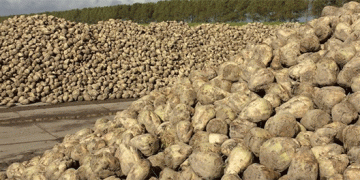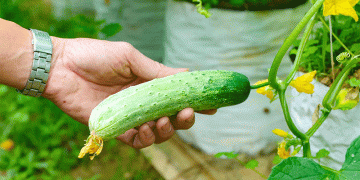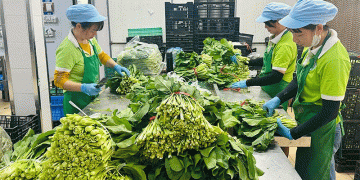The safety of the food supply is on the minds of the American public and the federal government. The food supply – and lettuce in particular – has been singled out in recent months by the media as a source of human illness.
The Centers for Disease Control and Prevention (CDC) reports that, since 1998, about 1,300 outbreaks caused by food-borne pathogens have occurred each year. The most recent outbreak occurred in September 2005, in which 26 people in Minnesota were allegedly made sick by Dole triple-washed bagged salads contaminated with E. coli O157:H7. E. coli is a bacteria that can cause intestinal pain and diarrhea.
There has not been consensus as to how the bagged salads were contaminated, said Jim Gorny, vice president of quality assurance and technology for United Fresh Fruit and Vegetable Association (United).
“We really don’t know where the pathogen was introduced into the system,” he said.
In response to the increased attention of contaminated lettuce, a coalition of industry associations released the “Commodity Specific Food Safety Guidelines for the Lettuce and Leafy Greens Supply Chain” on April 25.
The International Fresh-cut Produce Association, Produce Marketing Association (PMA), United Fresh Fruit & Vegetable Association (United) and Western Growers Association worked together to produce and distribute the document, which identifies and makes recommendations for food safety issues.
“It absolutely was not in response to the Dole outbreak or the ‘Dateline piece,’” Means said. The guidance has been in the works since the summer of 2004, and went through a number of drafts. She added that the timing of the guidance release and the Dateline story was simply a coincidence.
The lettuce and leafy greens guidance is actually the second commodity directive to be issued, and more are to follow. A guidance on melon safety was issued last year by PMA and United, and a tomato guidance is in the works. Gorny said that a green onions and herbs guidance is also being worked on, and he has seen a strong first draft.
Gorny said that one of the biggest benefits of the guidance is the open and transparent way it was produced.
“The process is really the most important part,” he said.
After a stern letter last November, the FDA released a statement that praised the guidance document and the groups that worked on it.
“While FDA announced in the action plan our intention to lead the effort to ensure the safety of fresh produce consumed in the U.S., we also acknowledged that the greatest progress towards this goal could only be achieved by FDA and our food safety partners in both the public and private sectors working both independently and in collaboration,” Robert Brackett, director for the FDA’s center for food safety and applied nutrition, said in the statement.
“The industry-led lettuce/leafy greens supply chain guidance presented here is a valuable example of what can be achieved by collaboration – the produce industry working with FDA, universities, states and other food safety partners to ensure the safety of fresh produce. Availability of this guidance as a tool to assist all parties along the supply chain, along with education and outreach to promote its implementation are tangible measures of progress towards achieving the goals of the Produce Safety Action Plan.”
Guidance
The guidance document addresses a number of steps that can be taken to prevent human pathogens from entering the food chain. The full text of the guidance can be found at www.fresh-cuts.org, www.pma.com, www.uffva.org and www.wga.com.
“The lettuce/leafy greens industry recognizes that once lettuce/leafy greens are contaminated, removing or killing pathogens is difficult,” the document states. “Therefore, prevention of microbial contamination at all steps from production to distribution is strongly favored over treatment to eliminate contamination after it has occurred.”
Because there is potential for contamination at every step in production, the guidance is broken into five sections, beginning in the field and ending at consumers.
“There is a weakest link in the food safety chain, and that is whoever is holding the produce,” Means said. “Everyone is equally responsible, so whoever is holding the baby needs to be paying the most attention.”
1.Production and harvesting. Pathogens can enter the food chain in the field through contaminated water, soil and equipment, or passed through workers harvesting by hand.
The guidance recommends regularly checking water quality and irrigation pipes to prevent contamination. Growers should also refrain from using raw manure on lettuce or leafy crops and have measures in place to reduce the likelihood of contact between compost and produce.
Flooded fields are of particular concern. According to the FDA, any produce that has touched floodwater is not safe and cannot be eaten. Growers should be especially careful to test fields that have been flooded and to clean all equipment that has been in contact with floodwaters to prevent cross contamination.
2.Post-harvest operations. Maintaining a sanitary and complete cold chain is the best way to prevent disease at the post-harvest step. Containers should also be used in their intended way. Single-use containers should not be reused, and reusable containers should be sanitized before their next use.
If employees have contact with the produce at this step, it is important that hygiene issues be addressed, such as hand washing and sanitizing. Operators should not allow food or drink near the produce in storage, and they should have procedures in place to secure the storage facilities when they are not in use.
3.Fresh-cut and value-added operations. Fresh-cut lettuce and leafy greens production include washing steps, but this may not remove all contaminants. The document states that, “microorganisms, including human pathogens, have a greater affinity to adhere to cut surfaces than uncut surfaces.”
Fresh-cut operators can reduce the risk of contamination by removing produce that has decay, testing water and identifying steps in the production process where contamination could occur.
At this stage, it also is important to remember the consumer. Because there could be confusion, packaging should be clearly labeled. Fresh cut lettuce and leafy greens that do not need to be washed by the customer should have “washed,” “triple washed” or “ready-to-eat” clearly displayed.
While new technology is being developed to extend shelf life, the guidance warns producers to conduct a careful evaluation because the technology “may allow extra time for the survival, persistence and slow growth of human pathogens from very low (undetectable) levels to levels that may be capable of causing disease, particularly if temperature abuse occurs.”
4.Distribution. In 2005, an amendment to the Federal Food Drug and Cosmetic Act was passed. The Sanitary Food Transportation Act gives the Department of Health and Human Services oversight of food transport, and any food item that is not in compliance with the rules is considered adulterated and unfit for sale.
The lettuce and leafy greens guidance document recommends that, on top of federal regulations, shippers should check for sanitary conditions in trailers and railcars. They should make sure that the container is clean overall, in good structural condition, does not contain unusual smells and has a functional cooling system.
When lettuce or leafy greens are stored in a cooler, Good Agricultural Practices or Good Manufacturing Processes should be followed. These practices include having a written sanitation plan, controlling pests and having a training program for workers. This will help prevent the cool storage from becoming a point of contamination.
Finally, the document recommends that noninvasive techniques be used to measure the temperature of produce during transport. Measure between packages, and discard units that have been punctured.
5.Retail, foodservice and consumer handling. The final section of the lettuce and leafy greens guidance document recommends that retailers and foodservice establishments discard produce with visible signs of decay and that all produce be washed in a sanitary environment unless it is clearly labeled pre-washed.
Ultimately, some of the responsibility falls on the end user.
“We in the industry think of the product supply chain, but the food supply chain ends at the consumer,” Means said. For that reason, PMA has been working with the Partnership for Food Safety Education.
“We want consumers to understand that they need to wash their produce unless it says they’re pre-washed,” Means said.
The not-for-profit group developed the Fight BAC! Campaign that promotes the steps of clean, separate, cook and chill to the public. More on the Fight BAC! Campaign can be found at www.fightbac.org.
Industry Responds to NBC News Program
The industry’s response to the April 28 “Dateline” piece on lettuce safety was a resounding, “It could have been worse.”
Jim Gorny, vice president of quality assurance and technology for United Fresh Fruit and Vegetable Association (United), represented the industry in the piece.
“It’s never a good thing to be on ‘Dateline,’” he said. “I think we came across as best as possible.”
Gorny said he was interviewed under the blazing Yuma, Ariz., sun for about an hour, but only about 45 seconds of his interview aired. A number of other interviews were excluded from the piece, including an interview with Margaret D’Arrigo-Martin, executive vice president for D’Arrigo Brothers of California.
“We wish they had used it. It would have resonated with the women in the audience,” said Kathy Means, vice president of government relations for the Produce Marketing Association (PMA). She thought that moms watching the program could have related to another mom talking about food safety.
United and PMA worked hard to present the show’s producers accurate information and to give a fair representation of the industry. PMA notified its members about the show before it aired and provided them with responses to questions that might come from local media.
According to PMA, there were no customer backlashes or dips in sales from the show. “We are grateful that there was very little consumer reaction,” Means said. That may be the result of a media savvy audience that is more immune to consumer scare reports.
Lea Thompson, the correspondent for the “Dateline” story, was quoted in an April 29, 2006, Salinas Californian article that she was impressed with the self-regulations already in place and said that the produce growers were very careful.
Gorny said this shows that the industry’s message got across. While he felt the “Dateline” piece could have been more balanced, the industry could have fared much worse, and in that sense, his efforts were successful.
“It’s mission accomplished.”





























